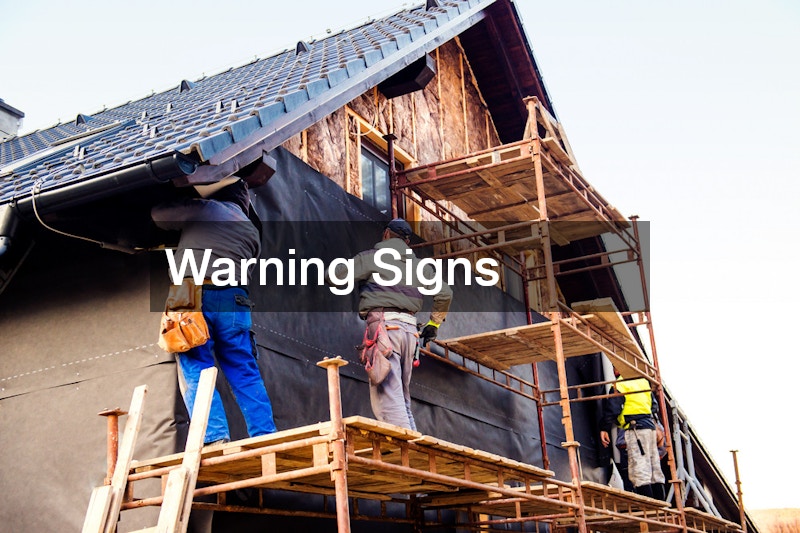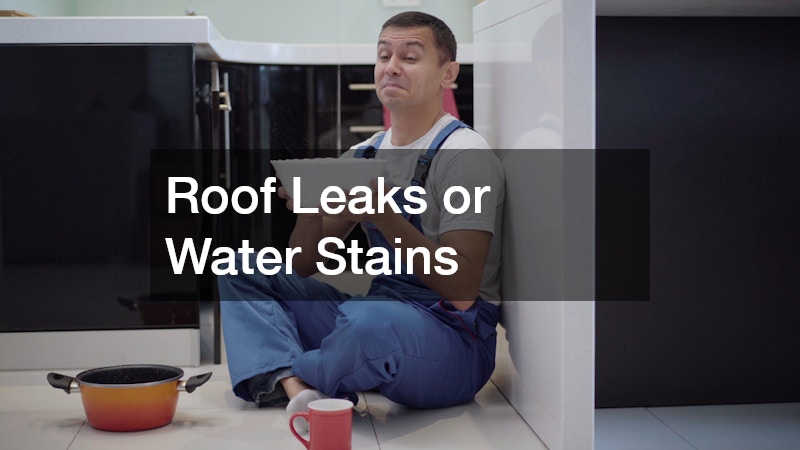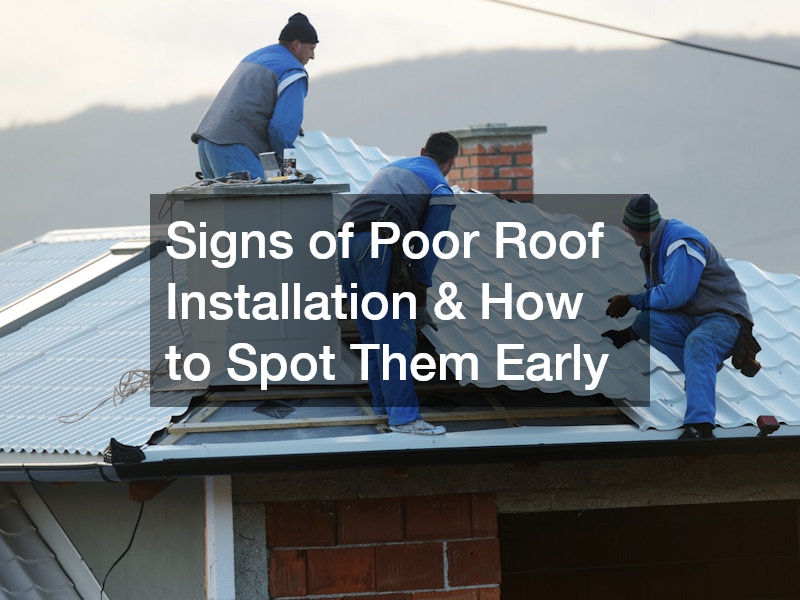- Poor roof installation can lead to premature leaks, sagging, and costly repairs.
- Warning signs include uneven shingles, missing flashing, and water stains.
- Improper ventilation and misaligned gutters signal potential installation flaws.
- Early detection saves money and prevents structural damage.
- Always inspect the roof after installation or storm events.
- Hiring a certified, residential roofing contractor is crucial for long-term performance.

A properly installed roof protects your home from the elements, regulates indoor temperatures, and increases energy efficiency. Unfortunately, a poor installation can cause major problems—some immediately obvious, others taking years to surface. Knowing how to spot the warning signs early can save homeowners thousands in future repairs. This article provides detailed guidance on what to look for, how to assess the integrity of your roof, and when to seek professional help.
1. Uneven or Misaligned Shingles
Why It Matters:
Shingles are your first line of defense against wind, rain, and UV rays. Poor alignment or uneven placement compromises their function.
What to Look For:
- Shingles that appear crooked or wavy across the roofline.
- Irregular gaps between rows.
- Overlapping or lifted shingle corners.
Consequences:
- Increased water infiltration.
- Wind damage during storms.
- Premature shingle wear.
What to Do:
Climb a ladder or use binoculars to inspect from the ground. If you see inconsistencies, contact a roofing professional for an assessment.
2. Missing or Improper Flashing
Why It Matters:
Flashing is installed around roof penetrations—like chimneys, skylights, and vents—to prevent leaks.
Warning Signs:
- Visible gaps near roof protrusions.
- Rusted or loose metal flashing.
- Water stains on ceilings below those areas.
Common Mistakes:
- Using roof cement or sealant instead of metal flashing.
- Poorly angled or unsecured flashing strips.
How to Spot It:
Look for discolored streaks or water trails on interior walls or attic surfaces near these points.
3. Roof Leaks or Water Stains

Early Indicators:
- Water dripping from ceilings during or after heavy rainfall.
- Brownish-yellow stains, rings, or streaks on interior walls or ceilings.
- Bubbling or peeling paint and warped drywall.
- Musty smells or visible damp spots in the attic insulation or rafters.
- Mold growth near ceiling corners or top-floor walls.
These signs often show up subtly at first but can escalate quickly if ignored. Water intrusion is one of the most common symptoms of poor roof installation, especially in areas where roofing materials weren’t sealed or flashed correctly.
Why It Happens:
- Improper Underlayment Installation: If the protective layer beneath the shingles (underlayment) is missing, torn, or poorly installed, water can penetrate the decking.
- Overdriven or Misplaced Nails: Nails that are driven too deep or in the wrong location can cause small holes or lift shingles, creating entry points for water.
- Faulty Flashing Installation: Flashing protects areas like chimneys, valleys, and roof-to-wall joints. If it’s misaligned or missing, water can easily seep in.
- Insufficient Slope or Drainage: On low-slope roofs, improper installation of drainage systems or a lack of slope can lead to standing water and slow leaks.
- Poor Shingle Alignment or Gaps: Uneven or overlapping shingles leave gaps that can channel water underneath rather than shedding it off the roof.
Immediate Action:
If you notice signs of leakage or staining, don’t wait. Take the following steps to mitigate damage and determine the scope of the problem:
- Locate the Source of the Leak: Start in the attic during rainfall or use a hose to simulate rain. Follow moisture trails to the entry point.
- Document the Damage: Take clear photos and note the extent of staining or visible mold. This will be helpful for repairs and insurance claims.
- Contact a Roofing Specialist Promptly: A residential roofing contractor with good reviews can perform a thorough inspection and recommend immediate fixes.
- Contain Interior Damage: Place buckets to catch drips, move belongings out of the way, and use a fan to dry out damp areas to prevent mold.
- Check Your Warranty: If your roof is new, poor installation may be covered under a contractor’s warranty or manufacturer’s material warranty.
Remember, what starts as a small stain can quickly turn into extensive rot or mold that compromises your home’s structure and air quality. Early detection and prompt repair are key.
4. Sagging Rooflines
Structural Concern:
A sagging roof suggests issues with the trusses, rafters, or decking—all of which could stem from poor installation or water damage.
Signs:
- A noticeable dip in the roof when viewed from the street.
- Interior ceiling appears warped or uneven.
- Cracks forming where the wall meets the ceiling.
Causes:
- Uneven load distribution due to incorrect decking support.
- Moisture penetration weakening wooden supports.
What to Do:
Do not walk on a visibly sagging roof. Schedule an inspection immediately to prevent collapse or further damage.
5. Poor Roof Ventilation
Why It’s Critical:
Proper ventilation is one of the most overlooked aspects of roof installation, yet it’s vital for maintaining a healthy, energy-efficient home. A roof without adequate airflow traps heat in the summer and moisture in the winter. This not only accelerates the deterioration of shingles and decking but also puts unnecessary strain on your HVAC system, leading to higher energy bills and potential indoor air quality issues. Over time, the trapped moisture can lead to mold, mildew, and even structural damage in your attic and roof supports.
Symptoms:
- Unusually Hot Attic Temperatures: On warm days, attics with poor airflow can become dangerously hot, sometimes exceeding 150°F, causing shingles to overheat and warp.
- Mold or Mildew on Insulation or Rafters: Persistent dampness allows mold to grow on attic surfaces, which can spread and contaminate the air.
- Musty or Stale Odors: A closed-up attic with poor ventilation often develops a damp, musty smell that may spread to other parts of the home.
- Ice Dams in Cold Climates: In winter, warm air trapped in the attic can melt snow on the roof, which refreezes at the eaves, forming damaging ice dams.
- Excessive Humidity or Condensation: Moisture buildup on attic windows or roof decking is a clear sign of inadequate air circulation.
Signs of Poor Installation:
- Blocked or Covered Soffit Vents: Insulation may accidentally block these vents, restricting the intake of fresh air.
- Missing or Inadequate Ridge Vents: The ridge vent is essential for hot air to escape. Its absence or improper placement means hot air stays trapped inside.
- Unbalanced Intake & Exhaust System: Good ventilation requires a balance of airflow in (soffits) and airflow out (ridge or gable vents). If one is too strong or too weak, the system fails.
- No Venting Features Installed at All: In some cases, poor contractors may skip vents entirely, especially on low-cost jobs, assuming homeowners won’t notice.
- Incorrect Vent Type for Roof Design: Using turbine vents, box vents, or ridge vents without considering roof pitch or home layout can lead to poor airflow.
Long-Term Risks:
Neglecting ventilation issues can lead to a host of long-term problems that affect your home’s structure, air quality, and energy efficiency:
- Rotting Wood & Attic Supports: Persistent moisture promotes wood decay, weakening rafters, decking, and framing components.
- Insulation Damage: Wet insulation loses its effectiveness, leading to increased heating and cooling costs and the need for full insulation replacement.
- Shingle Deterioration: Overheated attics cause shingles to age prematurely, curl, and lose their granules.
- Mold Contamination: Attic mold can spread to living areas, potentially triggering allergies or respiratory issues for occupants.
- Voided Manufacturer Warranties: Most roofing product warranties require proper ventilation. If it’s missing or improperly installed, you may lose warranty protection.
- Shortened Roof Lifespan: A poorly ventilated roof may need replacing years earlier than a properly ventilated one.
What to Do:
If you suspect ventilation problems, take action quickly:
- Inspect for Vents: From the outside, look for ridge vents along the roof peak and soffit vents under the eaves.
- Check Attic Conditions: Visit your attic during warm or cold months to assess temperature, airflow, and any signs of moisture or mold.
- Hire a Roofing Pro: An experienced contractor can evaluate your ventilation system and recommend upgrades such as installing additional vents, baffles, or a powered attic fan.
- Improve Air Circulation: In addition to fixing vents, make sure insulation isn’t blocking air pathways. Baffles can help keep soffit vents clear.
Ventilation might not be visible from the street, but its impact on your roof’s performance and your home’s safety is huge. Spotting and fixing poor ventilation early can prevent major repairs down the line.
6. Shingle Granules in Gutters
What It Indicates:
While some granule loss is normal over time, excessive buildup shortly after installation suggests poor-quality materials or installation errors.
Where to Look:
- Check downspouts and gutters after a rainstorm.
- Look for dark, sandy material clumped together.
Cause:
- Improper handling of shingles during installation.
- Overdriven nails damaging the shingle surface.
- Low-quality or defective shingle batch.
Solution:
If you notice large amounts of granules, reach out to a qualified contractor for a material assessment.
7. Misaligned Gutters and Drip Edges
Why It Matters:
Gutters and drip edges direct water away from the foundation. If improperly installed, they can cause water to back up under the roof deck.
Signs:
- Gutters pulling away from the fascia board.
- Water spilling over edges instead of through downspouts.
- Drip edge missing or incorrectly placed under shingles.
Impact:
- Erosion around the home’s perimeter.
- Siding and basement moisture problems.
- Roof deck water intrusion.
Maintenance Tip:
Ensure gutters are cleaned regularly and fastened securely. Drip edges should be visible and properly lapped.
8. No Permit or Inspection Records
Legal & Safety Concerns:
Reputable roofing projects typically require permits and post-installation inspections. Lack of paperwork may indicate unlicensed or subpar work.
What to Request:
- Copies of permits filed with your local building authority.
- Inspection reports or roofing warranties.
- Contractor’s license and insurance information.
Why It Matters:
Without permits, you may face code violations or insurance complications during future claims or property sales.
9. Voided Manufacturer Warranties
Check the Fine Print:
Many roofing material warranties are void if installed improperly or by uncertified contractors.
Signs Your Warranty May Be Voided:
- No documentation from the installer.
- Materials don’t match warranty terms.
- The contractor was not manufacturer-certified.
What to Do:
Contact the shingle manufacturer with your concerns. They may offer inspection or troubleshooting services.
10. Hiring the Right Roofing Professional
Choosing a skilled contractor is your best defense against poor installation.
Traits to Look For:
- Certified and insured.
- Transparent estimates and itemized contracts.
- Clear warranty terms and post-project support.
- Positive customer reviews and photo examples of past work.
Hiring a residential roofing contractor with good reviews ensures that your investment is protected and that your roof will perform as expected.
Final Thoughts
A well-installed roof should last decades with minimal issues. However, poor installation can cause costly problems long before a roof reaches its full lifespan. By learning to identify the signs early—from sagging and leaks to shoddy flashing and ventilation—you’ll be better equipped to act quickly and preserve your home’s integrity.
Bonus Tip: Conduct Seasonal Inspections
Schedule roof inspections twice a year—once in the spring and again in the fall. These checkups can catch installation flaws or minor damage before they escalate into expensive repairs.

